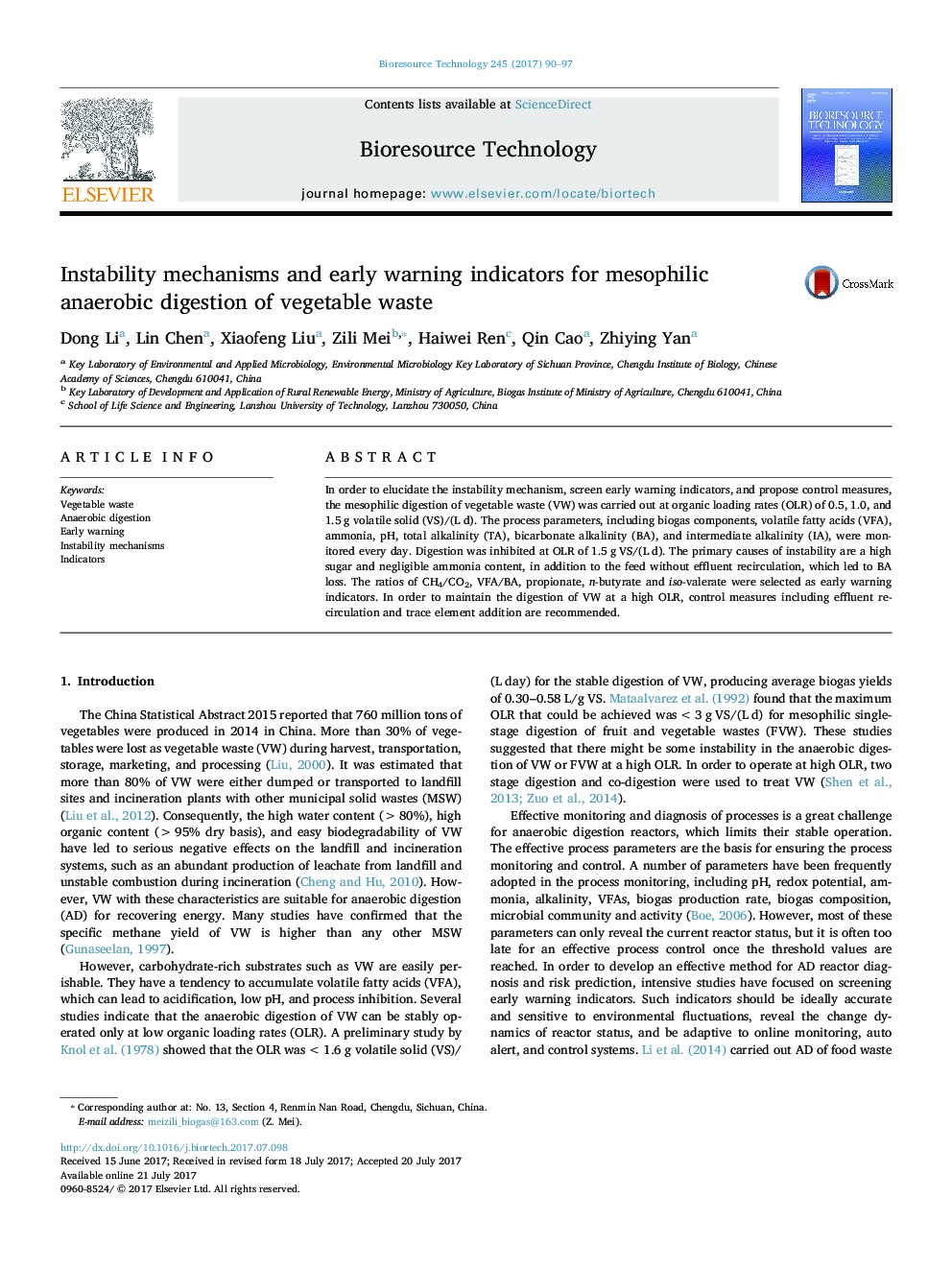| Article ID | Journal | Published Year | Pages | File Type |
|---|---|---|---|---|
| 4996765 | Bioresource Technology | 2017 | 8 Pages |
â¢Vegetable waste was digested at different organic loading rates (OLR).â¢The digestion was inhibited and failed when the OLR increased to 1.5 g VS/(L d).â¢The primary cause of instability was the loss of ammonia and bicarbonate alkalinity.â¢The ratios of CH4/CO2 and VFA/BA were selected as early warning indicators.â¢Effluent recirculation and TE addition are recommended for stable digestion.
In order to elucidate the instability mechanism, screen early warning indicators, and propose control measures, the mesophilic digestion of vegetable waste (VW) was carried out at organic loading rates (OLR) of 0.5, 1.0, and 1.5 g volatile solid (VS)/(L d). The process parameters, including biogas components, volatile fatty acids (VFA), ammonia, pH, total alkalinity (TA), bicarbonate alkalinity (BA), and intermediate alkalinity (IA), were monitored every day. Digestion was inhibited at OLR of 1.5 g VS/(L d). The primary causes of instability are a high sugar and negligible ammonia content, in addition to the feed without effluent recirculation, which led to BA loss. The ratios of CH4/CO2, VFA/BA, propionate, n-butyrate and iso-valerate were selected as early warning indicators. In order to maintain the digestion of VW at a high OLR, control measures including effluent recirculation and trace element addition are recommended.
